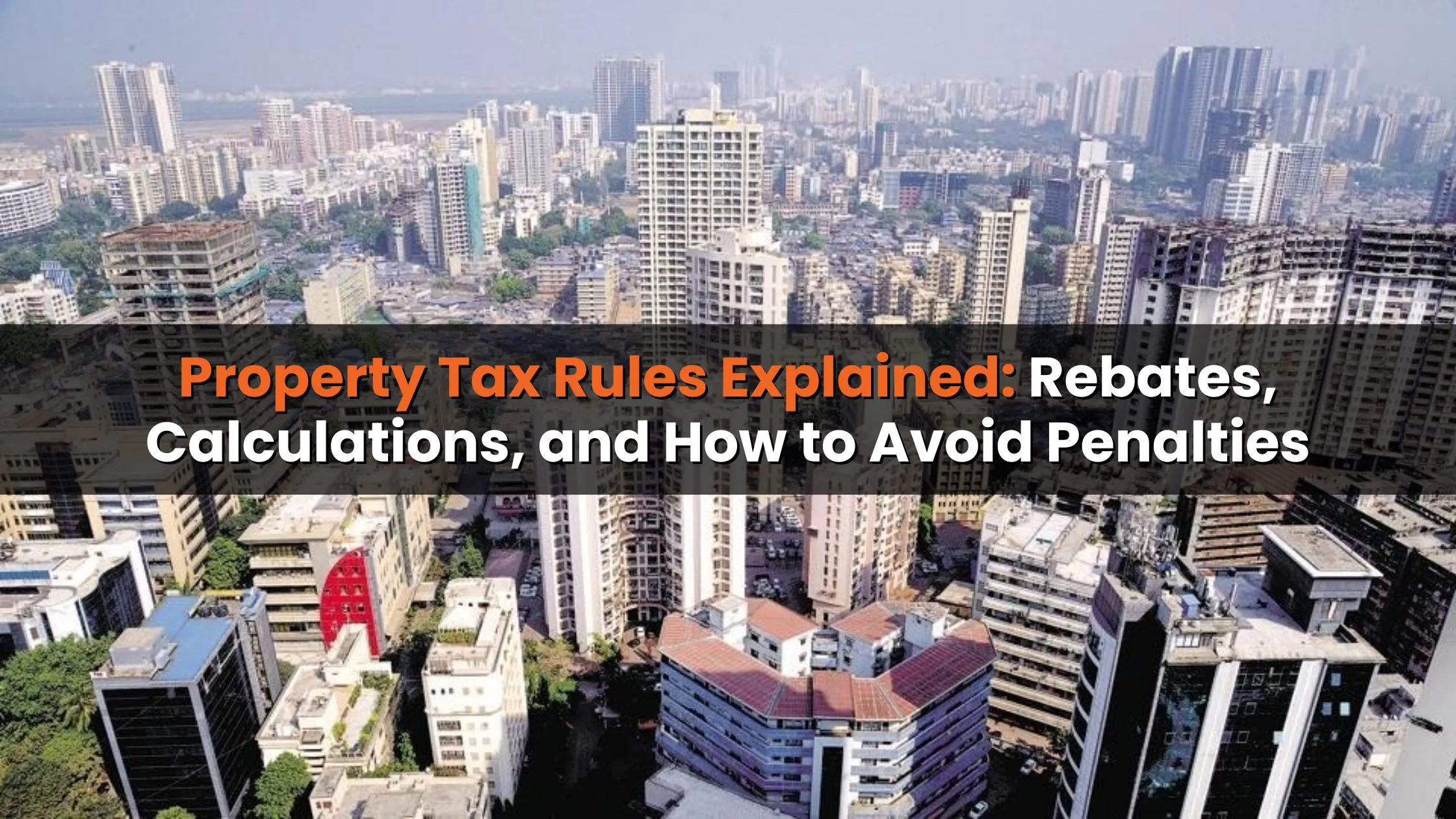Table of Content
Selling property built on inherited land can be tricky from a tax perspective. While inheriting land itself isn’t taxable, the moment you decide to sell it, especially after constructing a house on it the transaction invites capital gains tax. What many property owners don’t realize is that the land and the building are treated as two separate assets under income tax law.
This means your sale value, holding period, and cost calculations need to be split and handled separately for each. Let’s understand how taxation works when you sell a house built on inherited land and how smart planning can help you save tax.
What happens when you inherit land?
Under Indian tax law, inherited land refers to property passed down through a Will or inheritance after the previous owner’s death. The transfer itself is not taxable. However, when you later sell this property, capital gains tax applies.
For tax purposes, the cost of acquisition of inherited land is the same as what the previous owner had paid when they purchased it, not its current market value. Similarly, the holding period includes the time for which the original owner held the property.
So, if your father purchased land in 2010 and you inherited it in 2020, your holding period effectively begins in 2010. If you sell it in 2025, the total holding period exceeds 24 months, and it qualifies as a long-term capital asset.
Also Read: Taxation of Jointly Owned Property: Everything You Need to Know
Constructing a new house on inherited land
When you construct a new house on inherited land, the tax law treats the cost of construction as a cost of improvement a separate component from the inherited property itself.
This distinction matters because the land was acquired by inheritance (with the previous owner’s cost and holding period), while the house was constructed later using your own funds. The construction cost becomes part of your investment but has a different holding period starting from the date the house is completed.
For example, if you built a home in 2022 on land inherited in 2015 and sell the property in 2025, the land portion will qualify as a long-term capital gain (LTCG), but the building portion may still fall under short-term capital gain (STCG) since it’s held for less than 24 months.
Why sale value must be divided between land and building
When you sell property built on inherited land, it’s crucial to divide the sale value between the land and the constructed house. This division ensures that capital gains are calculated correctly for each portion.
- Land portion: Taxed based on the inherited cost (previous owner’s purchase price) and includes their holding period.
- Building portion: Taxed based on your construction cost (cost of improvement) and the time since completion.
This split can significantly impact the amount of tax you pay. If not apportioned properly or if documentation is weak, the tax department may question your computation, potentially leading to disputes or higher liability.
Experts recommend obtaining a valuation report from a registered valuer, who can fairly allocate the sale price between the land and the building using market rates.
How capital gains are calculated
Here’s how you can compute capital gains when selling a property built on inherited land:
- Determine the sale consideration (split between land and building).
- Subtract the indexed cost of acquisition for land (using the Cost Inflation Index for each year).
- Subtract the indexed cost of improvement for the house (construction cost adjusted for inflation).
- The resulting figure is your capital gain.
- Short-Term Capital Gain (STCG): Asset held for 24 months or less, taxed at your income slab rate.
- Long-Term Capital Gain (LTCG): Asset held for more than 24 months, taxed at 20% (with indexation before July 2024) or 12.5% (without indexation after July 2024).
Example: Suppose your father bought land in 2015 for ₹25 lakh, and you built a house on it in 2021 for ₹50 lakh. If you sell the entire property in 2025 for ₹2 crore, with ₹60 lakh attributed to land and ₹1.4 crore to the house, you must compute LTCG on the land and possibly STCG on the building.
Role of indexation and exemptions in tax planning
Indexation is a powerful tool that adjusts your cost of acquisition and improvement for inflation, reducing your taxable gain. For inherited land, indexation can be applied from the year the previous owner bought the property, not from the year you inherited it.
Key Exemptions:
- Section 54: Reinvest LTCG from the sale of a residential property into a new house within the stipulated time.
- Section 54F: Applies when you sell any long-term asset (like inherited land) and reinvest in a new house.
- Section 54EC: Allows investing up to ₹50 lakh of LTCG in specified bonds (NHAI or REC) within six months of sale.
Timing your sale and reinvestment strategically can help you qualify for these exemptions and significantly reduce your tax outgo.
Also Read: GST on Housing Society Maintenance: What Every Apartment Owner Should Know
Things to keep in mind when selling inherited land
Selling inherited land with a newly constructed house requires careful documentation and timing. Here’s what you must remember:
- Maintain all proof of ownership: Will, succession certificate, or inheritance deed.
- Keep records of construction costs: Bills, invoices, and contractor agreements serve as evidence for claiming improvement costs.
- Get a valuation report: Helps justify how you split the sale value between land and house.
- Understand the “grandfathering rule”: Compare old (20% with indexation) vs. new (12.5% without indexation) LTCG tax rates and choose the one more beneficial to you.
- Don’t sell too soon: Selling within 24 months of completing construction could make the building portion taxable as short-term gains.
Tax professionals advise reviewing your ownership and construction timelines carefully to avoid classification errors that could lead to higher tax liability.
Conclusion
If you’ve built a new home on inherited land, understanding how taxes work before you sell can save you significant money. Since the land and the house are treated as separate assets, accurate valuation, clear documentation, and strategic timing are essential.
By properly splitting your sale value, applying indexation, and exploring exemptions under Sections 54 and 54EC, you can minimize your tax burden and stay fully compliant. Before proceeding with the sale, consult a tax expert to help you structure the transaction in the most tax-efficient way possible.






_1766473246.webp)




Ans 1. No, inheriting land itself is not taxable. However, when you sell the inherited property, capital gains tax applies based on the original owner’s purchase cost and holding period.
Ans 2. You must split the sale value between land and building. The land’s gain is based on the previous owner’s cost and holding period, while the building’s gain is based on your construction cost and the time since completion.
Ans 3. Because the land was inherited while the house was newly constructed, they have different acquisition dates and costs, which affects how capital gains are calculated.
Ans 4. If the inherited land or house is held for more than 24 months, it attracts long-term capital gains tax (LTCG). If held for 24 months or less, it is taxed as short-term capital gain (STCG) at your regular income tax rate.
Ans 5. Yes. Indexation can be applied from the year the previous owner purchased the property, helping reduce your taxable gains by adjusting the cost for inflation.
Ans 6. You can claim exemptions under: Section 54: Reinvest LTCG from a house sale into a new home. Section 54F: Reinvest LTCG from land into a residential property. Section 54EC: Invest up to ₹50 lakh of LTCG in NHAI or REC bonds.
Ans 7. Obtain a valuation report from a registered valuer to apportion the sale price accurately. This ensures fair taxation and avoids disputes with the tax department.
Ans 8. Yes. The land portion is taxed based on long-term capital gains, but the building may attract short-term capital gains if sold within 24 months of completion.
Ans 9. Keep all ownership proofs (Will, succession certificate), construction bills, valuation reports, and sale documents to substantiate your claims during tax filing.
Ans 10. Plan your sale timing, use indexation benefits, reinvest under Sections 54 or 54EC, and ensure proper documentation to legally reduce your tax burden.